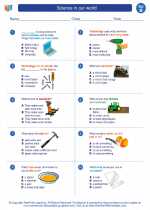Echinoderms
Echinoderms are a group of marine animals characterized by their spiny skin and radial symmetry. They include familiar creatures such as sea stars, sea urchins, and sea cucumbers. These fascinating animals play an important role in marine ecosystems and have unique biological characteristics.
Characteristics of Echinoderms:
- Radial Symmetry: Echinoderms typically have a body plan that is radially symmetrical, meaning their body parts are arranged around a central axis. This allows them to interact with their environment from multiple directions.
- Endoskeleton: Echinoderms have an internal skeleton made of calcium carbonate plates, which gives them their distinctive spiny appearance.
- Water Vascular System: This unique system helps echinoderms move, feed, and respire. It consists of a network of water-filled canals that connect to tube feet, which are used for locomotion and feeding.
- Regeneration: Many echinoderms have the ability to regenerate lost body parts, such as arms or spines, making them resilient and adaptable animals.
Types of Echinoderms:
Echinoderms are divided into several classes, each with its own unique characteristics:
- Sea Stars (Asteroidea): These iconic creatures have multiple arms radiating from a central disc and are known for their ability to regenerate lost arms.
- Sea Urchins and Sand Dollars (Echinoidea): These echinoderms have a spherical or flattened body covered in spines, and they use their tube feet to move and feed.
- Sea Cucumbers (Holothuroidea): These elongated, cucumber-shaped animals have leathery skin and are important scavengers in marine environments.
- Brittle Stars (Ophiuroidea): These echinoderms have long, flexible arms and are known for their agile and swift movements.
Importance of Echinoderms:
Echinoderms play crucial roles in marine ecosystems. Sea stars, for example, are top predators that help maintain the balance of marine populations by controlling the populations of their prey. Sea urchins are important herbivores that graze on algae, preventing overgrowth and maintaining the health of coral reefs and rocky habitats.
Study Guide:
Here are some key points to remember when studying echinoderms:
- Describe the main characteristics of echinoderms, including their radial symmetry and water vascular system.
- List and explain the different classes of echinoderms, highlighting their unique features and adaptations.
- Discuss the ecological roles of echinoderms in marine ecosystems and their importance in maintaining biodiversity.
- Explore the concept of regeneration in echinoderms and its significance to their survival in dynamic marine environments.
- Research specific examples of echinoderms and their habitats, behaviors, and ecological interactions.
Understanding the biology and ecological significance of echinoderms can provide valuable insights into the diversity and resilience of marine life. Studying these fascinating creatures offers a unique window into the interconnectedness of organisms in the ocean.
[Echinoderms] Related Worksheets and Study Guides:
.◂Science Worksheets and Study Guides Second Grade. Science in our world

 Worksheet/Answer key
Worksheet/Answer key
 Worksheet/Answer key
Worksheet/Answer key
 Worksheet/Answer key
Worksheet/Answer key
 Vocabulary/Answer key
Vocabulary/Answer key
